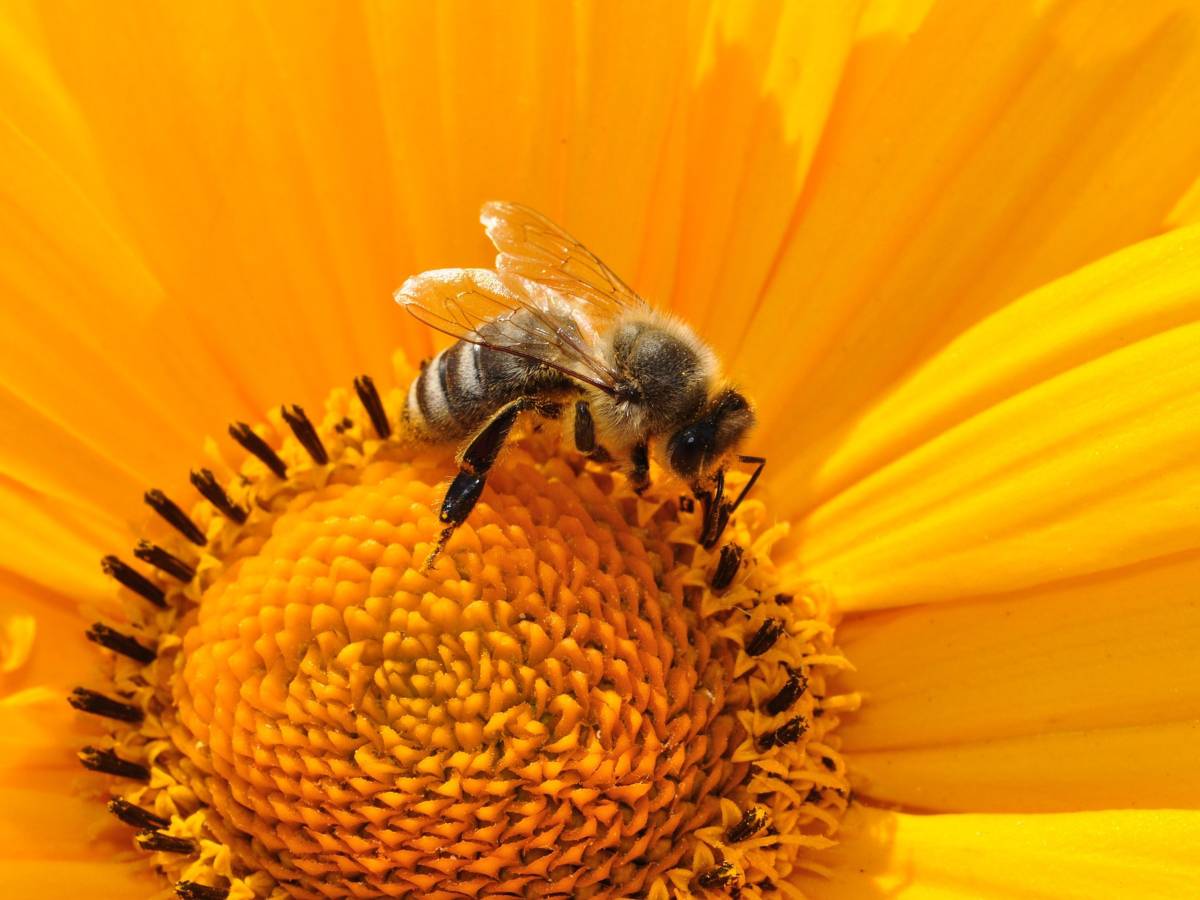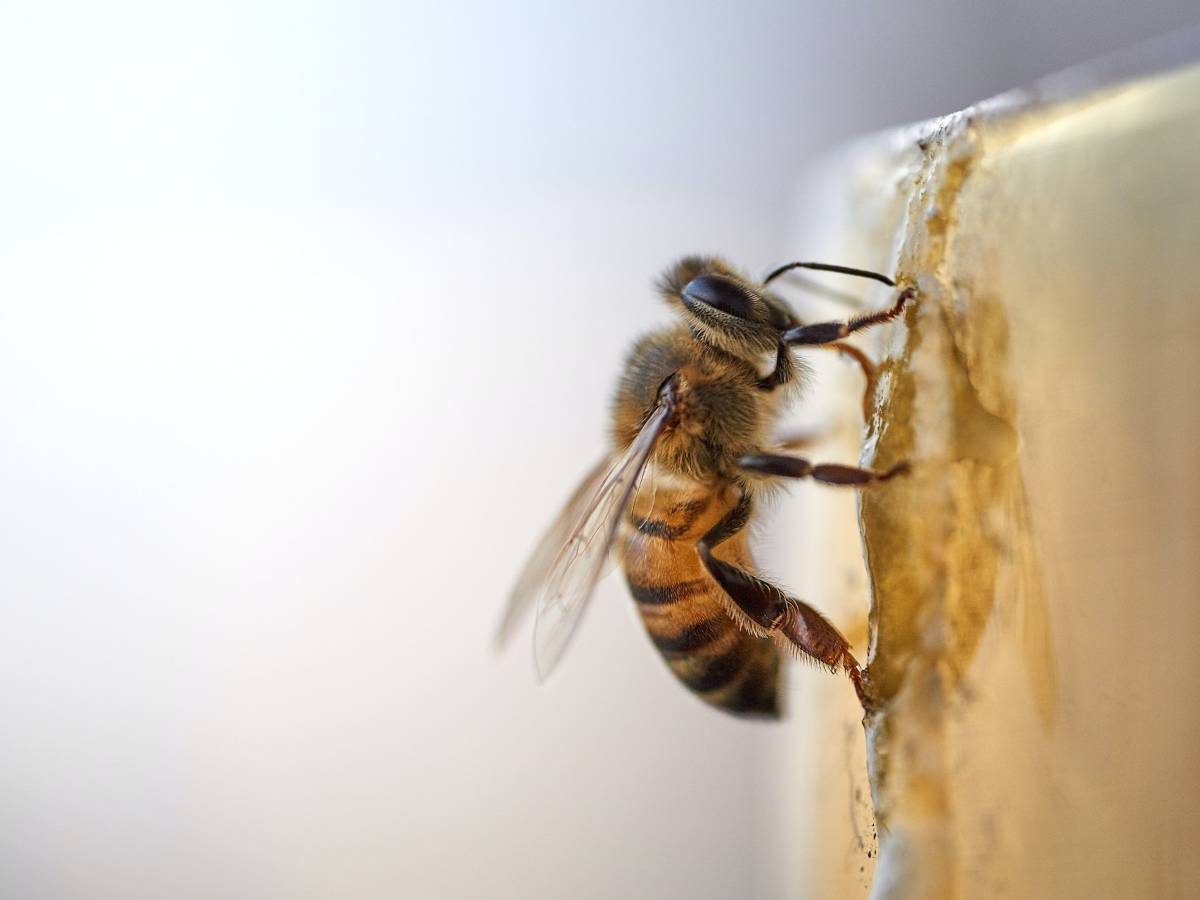Proudly Serving Northern New Jersey, Rockland County & Manhattan
Bees are necessary to maintain the health of crops and the beauty of gardens. Bees can attack a potential threat, though they are not as aggressive as wasps or hornets. They are also known to be voracious defenders of their hives.
A beehive in a yard can cause issues because bees can be dangerous and even deadly close to humans, especially for those who are allergic to bee stings.
Bees can be an unsettling sight near residences and commercial buildings, but once they’ve made a nest or hive on a property, they can truly become an issue. Because they worry about getting stung if they approach too closely, bees terrify a lot of people. In circumstances like this, contacting a good bee control expert is a must.

Bees come in a wide variety of species, and each one has unique traits. They have two things in common: they are both flying, stinging insects that can become aggressive when provoked. They are also both pollinators.
Bees establish their nests near sources of food and building materials. Recyclable centers and trash cans might also encourage bee robbers.
Typically, bees look for flowers that have pollen and nectar on them. But when flowers aren’t available, they’re very opportunistic and will look for syrups, sugar, fruit juices, and other sweet materials that are easily accessible.
As you can see, bees are beneficial to humans because they pollinate plants and gather honey, but they can also be major pests at times.
When bees fly, they produce a characteristic buzzing sound. The buzzing becomes louder as the bee gets bigger. There is a head, thorax, abdomen, and four wings on every bee. Beyond that, though, each species will have a different appearance.
The ability of bees sting and their propensity to spread harmful bacteria and debris that can trigger severe allergies and reactions make them a potential threat to human safety.
The first step is to figure out what kind of bee you are dealing with. Bees are recognized for their function in pollination and belong to the same family as wasps. Over 20,000 different species of bees have been identified.
Bees can have stripes of bright blue, red, or yellow, and they can be black or brown. For example, honey bees have bands that are yellow-orange and brownish-black and measure about ¾ of an inch in length. Despite having hair on their bodies, bumble bees are larger and have darker bodies with yellow markings.
Honey, carpenter, and bumble bees are the most common types of bees that are encountered by homeowners and business owners.

They resemble carpenter or bumble bees in size, but they are smaller. They are also black and yellow. Honey bee adults are between half and five-eighths of an inch in length.
As social insects, honey bees are arranged into worker bees, drones, and the queen bee via a caste system in their hives. In addition to beekeeping hive boxes, the hives can be found inside hollowed-out trees, logs, or even fence posts.
When provoked, worker bees have a reputation for biting. The stinger of the bee clings to the flesh of its victim due to the barbs on it. The stinger stays in the victim’s body and extracts itself when the bee pulls away. And so, the bee dies.
Unlike their relatives that produce honey, these bees live alone and are not as gregarious. They are frequently found in fields, parks, and wooded areas, as well as in the vicinity of houses with gardens.
They create galleries, not hives, by boring into wood surfaces to raise their young bees; however, they do not consume the wood they have tunneled through.
Carpenter bees don’t initially do much harm, but as their population increases, they dig more nests throughout the building. As they carry pollen into stock in the egg chambers, they also scatter it around the opening. The surface of the wood may become stained as a result.
They can have up to three yellow stripes running the length of their bodies, and they have black behind their wings. They measure between half an inch and an inch.
Bumble bees can gather and transport pollen back to their hives thanks to their fuzzy covering of hairs. These bees are frequently found in parks, forests, and fields.
When there is no other food available during the winter, they use the pollen they gather to make honey. Nevertheless, bumblebee-produced honey is inedible to humans.
The hives of bumblebees are frequently constructed below ground. These hives are located beneath sheds, in compost piles, or holes left by small rodents. They might also construct birdhouses or beehives in trees.
Finding a beehive anywhere close to your house or yard is a major indicator of an infestation. A nest usually dangles from a tree or close to your roof. The majority of bee hives and nests have a honeycomb pattern and are located in tree hollows or other burrows.
Frequent sightings of bees are another important indicator of an infestation. If you see a single bee in your yard or house regularly, there’s probably a hive or other source close by.
Several related species, including cicada killers, paper wasps, sand wasps, carpenter bees, bumble bees, honey bees, ground bees, sheds, garages, walls, and fencing, can readily establish themselves in or on structures.
A multitude of species can be found underground and/or in trees, shrubs, and ground cover, including bald-faced hornets, bumble bees, and yellowjackets (ground bees).
Insect colonies and their nests can be eliminated, removed, controlled, or exterminated in various circumstances. Bee Control is always ready to help.
We strongly advise against using do-it-yourself techniques to remove bee nests by non-professionals. Bee removal is a task best left to certified bee control specialists. because bees can sting in large quantities, and it is dangerous. It is best to leave the removal of all stinging insect nests to experts.
However, to reduce the likelihood of bee infestations, customers can take a few steps:
Nobody desires to receive a bee sting. A backyard cookout or family picnic can be ruined by a bee sting. A bee sting can cause serious health problems or even be fatal if you have an allergic reaction. Here are some pointers to remember to prevent bee stings:
Our professionals at Titan are continuously trained in the newest methods for bee removal, control, and prevention. We’ll locate the nest and determine what kind of stinging insects are present on your land. After that, we’ll confirm the success of our removal efforts.
Depending on the nest’s size, location, and kind of bees present, different methods for eliminating bee colonies may be used. It’s crucial to watch out for bees because they are essential to maintaining our environment, in addition to making sure you and your family stay safe.
Following the inspection, the expert will locate any possible points of entry into your property that need to be sealed off to keep bees out.
Complete hive removal is the only way to get rid of bees from a home. See Titan pest management expert for assistance with bee control to ensure efficiency and safety!